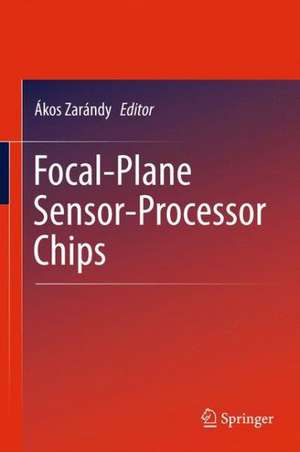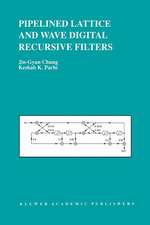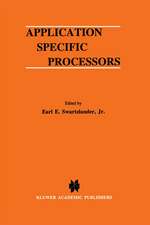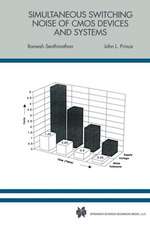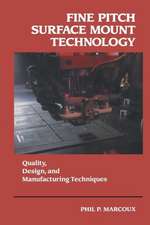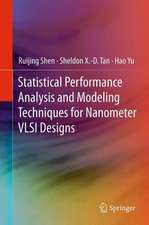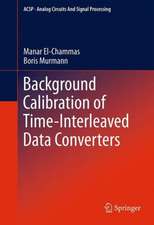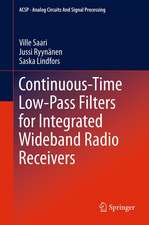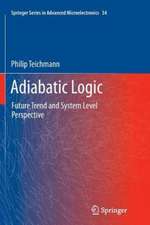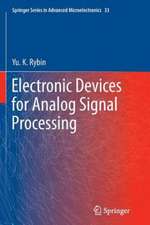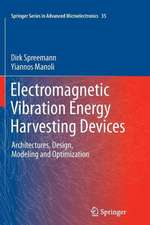Focal-Plane Sensor-Processor Chips
Editat de Ákos Zarándyen Limba Engleză Paperback – 21 sep 2014
| Toate formatele și edițiile | Preț | Express |
|---|---|---|
| Paperback (1) | 697.97 lei 43-57 zile | |
| Springer – 21 sep 2014 | 697.97 lei 43-57 zile | |
| Hardback (1) | 952.09 lei 43-57 zile | |
| Springer – 8 mar 2011 | 952.09 lei 43-57 zile |
Preț: 697.97 lei
Preț vechi: 821.14 lei
-15% Nou
Puncte Express: 1047
Preț estimativ în valută:
133.60€ • 145.17$ • 112.30£
133.60€ • 145.17$ • 112.30£
Carte tipărită la comandă
Livrare economică 21 aprilie-05 mai
Preluare comenzi: 021 569.72.76
Specificații
ISBN-13: 9781489994684
ISBN-10: 1489994688
Pagini: 320
Ilustrații: XIII, 305 p.
Dimensiuni: 155 x 235 x 17 mm
Greutate: 0.45 kg
Ediția:2011
Editura: Springer
Colecția Springer
Locul publicării:New York, NY, United States
ISBN-10: 1489994688
Pagini: 320
Ilustrații: XIII, 305 p.
Dimensiuni: 155 x 235 x 17 mm
Greutate: 0.45 kg
Ediția:2011
Editura: Springer
Colecția Springer
Locul publicării:New York, NY, United States
Public țintă
ResearchCuprins
<P>Overview of focal plane chip technology.- smart imagers; cellular wave computers.- State-of-the-art focal-plane sensor-processor chips.- Ultra-high binary morphology processor applying asynchronous digital waves.- Introduction of the MIPA 4 chip.- Robust Focal-Plane Analog Processing Hardware for Dynamic Texture Segmentation.- A Focal Plane Processor for Continuous-Time 1-D Optical Correlation Applications.- A pixel-parallel cellular processor array in a stacked three-layer 3D silicon-on-insulator technology.- VISCUBE: a multi-layer vision chip.- THz detector sensor-processor array.- Nonlinear processing with Memristive arrays.- Bionic Eye-glass for guiding blind people.- Bio-inspired approaching object identification algorithms.- Cellular Neural Network (CNN) Based Control Algorithms for Omni directional Laser Welding Processes.</P>
Textul de pe ultima copertă
Focal-Plane Sensor-Processor Chips Edited by: Ákos Zarándy Focal-plane sensor-processor imager devices are sensor arrays and processor arrays embedded in each other on the same silicon chip. This close coupling enables ultra-fast processing even on tiny, low power devices, because the slow and energetically expensive transfer of the large amount of sensory data is eliminated. This technology also makes it possible to produce locally adaptive sensor arrays, which can (similarly to the human retina) adapt to the large dynamics of the illumination in a single scene. This book introduces a selection of the state-of-the-art focal-plane sensor-processor (FPSP) array chips, design concepts, and some applications. It provides an overview of focal plane chip technology, smart imagers and cellular wave computers, along with numerous examples of current vision chips, 3D sensor-processor arrays and their applications. Coverage includes not only the technology behind the devices, but also their near- and mid-term research trends. •Describes a variety of state-of-the-art vision chips; •Introduces opportunities offered by the technology through application examples such as oCompact, low power, high performance visual devices; oUltra-high speed visual decision making; oBio-inspired algorithms; •Includes coverage of adaptive sensing and smart sensors; •Describes 3D silicon integration into sensor-processor arrays; •Discusses future trends for applying memristors in topographic processor arrays.
Caracteristici
Describes a variety of state-of-the-art vision chips Introduces opportunities offered by the technology through application examples Includes coverage of daptive sensing and smart sensors Includes supplementary material: sn.pub/extras
